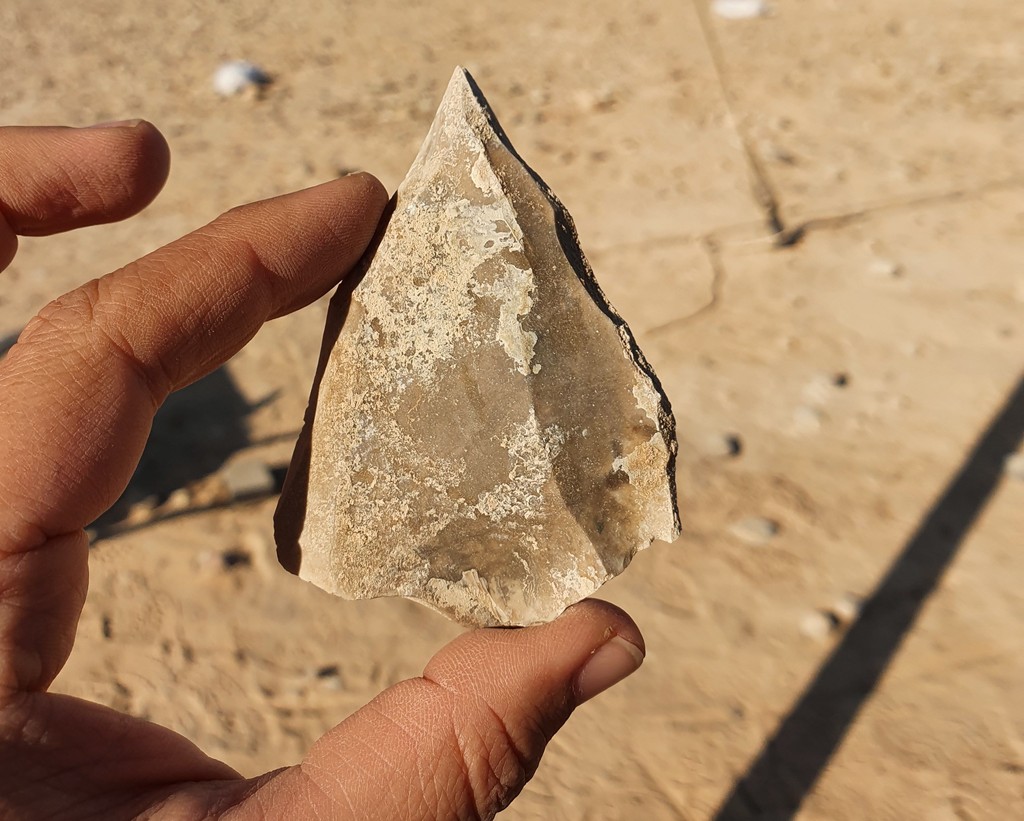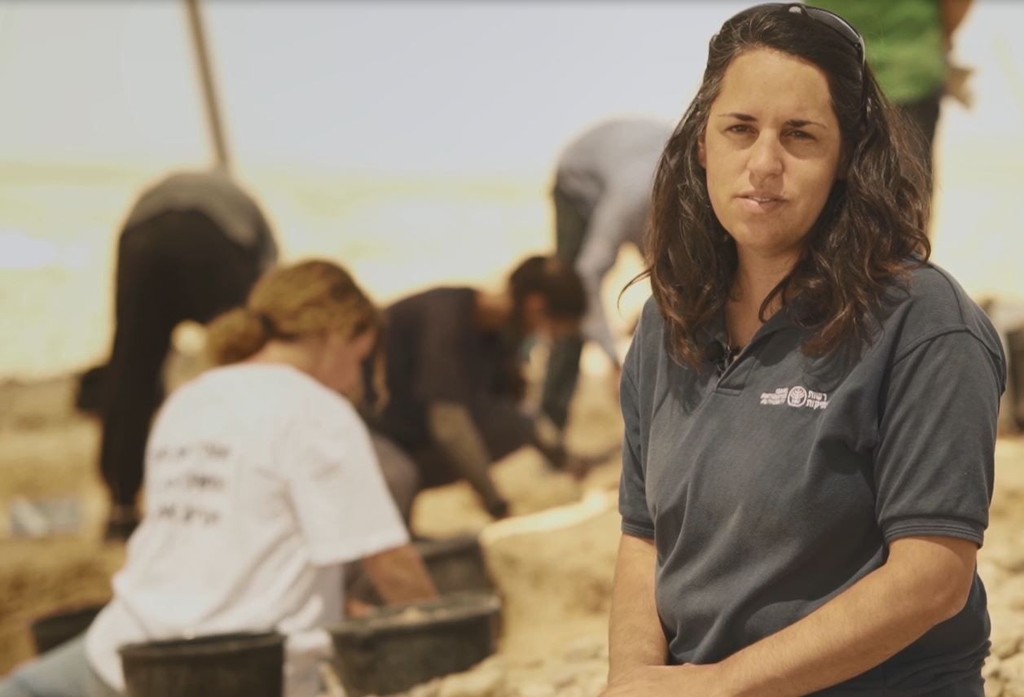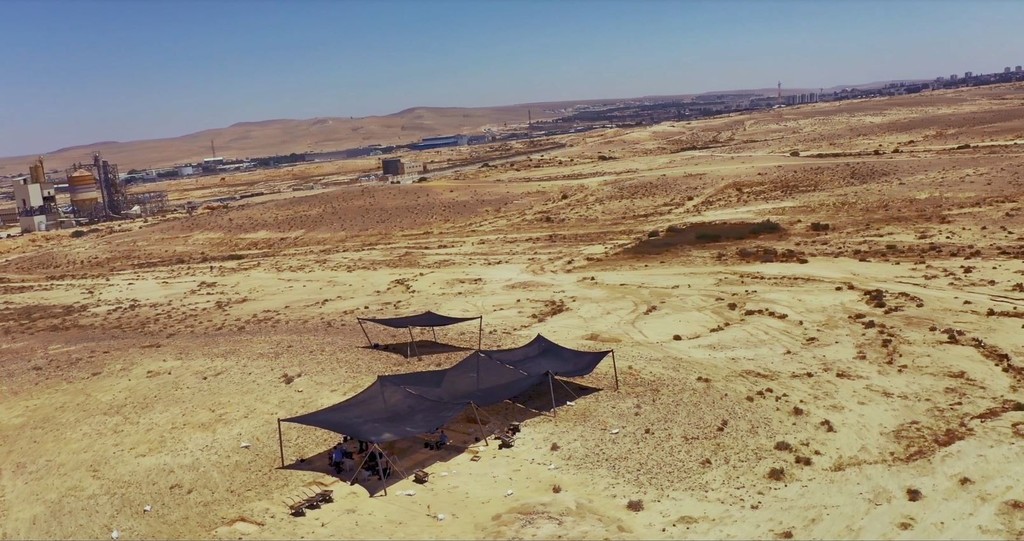The Israel Antiquities Authority recently discovered a Middle Paleolithic flint knapping site dated 50,000-250,000 years ago.
The newly discovered site near the southern city of Dimona is small. Prehistoric humans seemingly arrived there in order to access the abundant natural flint in the area, from which they made their tools.
The unique site houses a form of flint knapping method, known as "Nubian Levallois," which originated in Africa.
Researchers try to trace the migratory patterns of this technology in order to understand the migration routes of modern humans from Africa to the rest of the world, about 100,000 years ago.
According to excavation directors, paleontologists Talia Abulafia and Maya Oron from the Israel Antiquities Authority, this is the first evidence of a ‘Nubian’ flint industry in an archaeological excavation in Israel.
This manufacturing is attributed to modern human populations that lived in East Africa 100,00 to 150,000 thousand years ago and migrated from there to the rest of the world.
3 View gallery


One of the flint tools found at the excavation site
(Photo: Emil Eladjem, Israel Antiquities Authority)
A number of such Nubian sites have been discovered in the Arabian Peninsula in the last decade. This has led many scholars to claim that modern humans left Africa through the Arabian Peninsula.
The Dimona site appears to present the northernmost example of Nubian flint tools found in situ, thus marking the migration route from Africa to Saudi Arabia, and from there, perhaps, to the Negev.
The excavations were funded by the Electric Company in preparation for the construction of a solar energy field and assisted by local youths from nearby Dimona.
According to Northern Negev District Archaeologist at the Israel Antiquities Authority Svetlana Talis, many of the youths are working at the site as a summer job to help their families during the economically challenging period of the COVID-19 outbreak.
3 View gallery


Excavation director paleontologist Maya Oron
(Photo: Emil Eladjem, Israel Antiquities Authority)
"Dimona is one of the communities that were most severely affected by the second wave of the coronavirus outbreak and was even on the verge of lockdown," said Talis.
"After wondering what to do during the summer vacation, local youths from Dimona came to the excavation site to work and help their families, and to uncover a site of particular importance," she said.
"All of this is part of a project promoted and directed by the Israel Antiquities Authority in recent years, which seeks to bring our youth closer to their own cultural heritage.”


